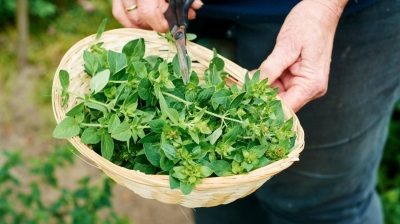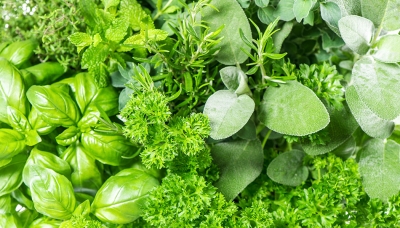profile/7501IMG_20200105_084758_04.jpg
Jullyfeco

What Are The Health Benefits Of Oregano?
~16.2 mins read
We include products we think are useful for our readers. If you buy through links on this page, we may earn a small commission. Here’s our process.
Oregano is a herb from the mint, or Lamiaceae family. People have used it for thousands of years to add flavor to dishes and to treat health conditions. It features in the Mediterranean diet.
The Greeks and Romans associated oregano with joy and happiness. The name comes from the Greek words “oros,†meaning mountain, and “ganos,†meaning joy.
There are different types of oregano. The most common type is Oregano vulgare, also known as Spanish thyme and wild marjoram.
People use oregano in the diet as supplements and as an aromatic oil.
The antioxidants thymol, carvacrol, limonene, terpinene, ocimene, and caryophyllene give the herb its flavor and scent. They also contribute to the health benefits of oregano oil. Oregano provides other antioxidants when people consume it in the diet.
 Share on PinterestOregano may help fight bacteria, relieve inflammation, and regulate blood sugar.
Share on PinterestOregano may help fight bacteria, relieve inflammation, and regulate blood sugar.People around the Mediterranean region have used oregano for centuries in herbal medicine to treat many ailments, including:
Scientists need to do more research to confirm the benefits of using oregano, but there is some evidence that it could help:
Oregano and other herbs provide antioxidants. Dietary antioxidants help the body eliminate free radicals, which are toxic substances that result from natural processes and environmental stresses. A buildup of free radicals can trigger oxidative stress. Oxidative stress can lead to cell damage that may result in various diseases, including cancer and diabetes.
Learn more here about antioxidants.
Antibacterial properties
The main components of oregano essential oil are carvacrol and thymol. These may have antimicrobial properties.
In a 2019 laboratory study, carvacrol and thymol prevented various strains of Staphyloccus aureus (S. aureus) bacteria from developing in meat and dairy products, suggesting that it could help control bacterial growth in foods.
Amid growing concerns about diseases becoming resistant to antibiotics, researchers carried out lab tests to investigate the effects of oregano oil on various microbes that do not respond to other drugs.
The oil showed “significant antibacterial activity†against 11 such microbes. This suggests that substances in oregano could play a role in fighting diseases that no longer respond to antibiotics.
While these tests indicate that compounds in oregano may have antibacterial properties, it does not mean that eating oregano will prevent infections.
Vitamin C is an antioxidant that plays a key role in the immune system. Which foods contain vitamin C? Find out here.
Anti-inflammatory properties
According to one literature overview, the oils and constituents of oregano oil, such as thymol and rosmarinic acid, appear to have anti-inflammatory properties.
In animal studies, oregano extract has reduced inflammation that could lead to:
It is worth noting that the studies used concentrated extracts of oregano. This is not the same as humans eating oregano in the diet.
Rosemary is another herb that may have anti-inflammatory properties. Find out more.
Protecting against cancer
Some of the ingredients in oregano may have anticancer properties.
Scientists have found evidence that extracts may help prevent DNA damage in cells due to oxidative stress, radiation, and mitogens, a type of protein that can cause unwanted cell division.
Researchers have also found evidence that carvacrol and thymol may prevent melanoma cells from growing and skin cancer from spreading.
While eating oregano by itself is unlikely to prevent cancer, a varied, plant-based diet that is rich in antioxidants may help prevent cell changes that can lead to cancer.
In 2013, lab studies suggested that Origanum majorana could help slow or stop the progression of metastatic breast cancer.
How can diet affect the risk of cancer? Find out here.
Diabetes
Compounds in oregano may help manage type 2 diabetes. Authors of a 2016 rodent study concluded that Origanum extract may help:
The authors noted that some people already use oregano leaves and oil to manage high blood sugar levels.
Type 1 diabetes is an autoimmune disease. Experts do not know what causes it, but oxidative stress may play a role.
In 2015, researchers found that an extract of oregano improved type 1 diabetes in mice. They suggested this could be due to oregano’s antioxidant properties, its effect on the immune system, and its ability to prevent cell death.
Which other herbs and spices may help with diabetes? Find out here.
Depression
In 2018, scientists looked at how treatment with oregano oil and other substances affected rats with depression due to chronic unpredictable stress.
After 14 days, stress-related behavior improved in rats that received the oregano treatment. The study authors concluded that oregano might relieve stress-related behavior.
Can other herbs help with depression? Find out here.
Other possible health benefits
According to the National Library of Medicine, people take oregano products by mouth for:
People apply oregano oil to the skin for:
There is not enough evidence to support the medicinal use of oregano as a dietary herb, supplement, or oil in most of these cases.
However, it is unlikely to cause harm in most people as long as people do not consume too much oregano oil and ensure that any topical applications use a diluted form of the oil.
There are many types of oregano, and the antioxidant and nutrient content can vary widely.
The table below shows some of the nutrients in one teaspoon (tsp), or 1 gram (g) of dried oregano leaves.
It also shows how much an adult needs of each nutrient, according to the 2015–2020 Dietary Guidelines for Americans. Requirements vary according to the individual’s sex and age.
| Nutrient | Amount | Daily adult requirement |
| Energy (calories) | 2.7 | 1,800–3,000 |
| Carbohydrate (g) | 0.7 | 130 |
| Fiber (g) | 0.4 | 25.2–33.6 |
| Calcium (millgrams [mg]) | 16.0 | 1,000–1,200 |
| Phosphorus (mg) | 1.5 | 700 |
| Potassium (mg) | 12.6 | 4,700 |
| Folate (mcg, DFE) | 2.4 | 400 |
Examples of antioxidants in the oregano herb include tryptophan, lysine, valine, arginine, vitamin C, vitamin A, and vitamin E (tocopherol).
Get some tips on other antioxidant-rich foods.
MEDICAL NEWS TODAY NEWSLETTER
Stay in the know. Get our free daily newsletter
Expect in-depth, science-backed toplines of our best stories every day. Tap in and keep your curiosity satisfied.
Enter your email
Your privacy is important to us
People can use the leaves dry or fresh to add a “Mediterranean†flavor to a range of dishes.
It pairs well with tomato and often features in pizzas and pasta sauces.
People also add it to:
Here are some tips for adding it to food:
To moderate the flavor, try the following:
If a recipe asks for one tsp of dried oregano, this is equivalent to one tbsp of fresh oregano.
People can buy oregano dried or fresh in grocery stores. They can also grow it in a pot on a windowsill or balcony or in the garden. It is a perennial, which means it can grow all year.
Various different forms of oregano are available to purchase online, including dried oregano and oregano seeds to grow the herb with.
Oregano as a herb, oil, or supplement is likely to be safe for most people.
However, people should:
Ask their doctor before starting any supplement, especially if they are taking other medications or have a medical condition.
Avoid oregano products for 2 weeks before surgery, as it can increase the risk of bleeding.
Dilute essential oils before use, either with a carrier oil, such as olive oil, or in water, as for a steam bath. The concentration of oregano oil should be no more than 1%, or skin irritation may occur.
It can be dangerous to swallow essential oils or apply them to the skin. People should check the correct way to use each product to prevent toxicity.
Oregano may affect the body’s ability to absorb copper, iron, and zinc. It may also lower blood sugar.
People with an allergy to plants belonging to the Lamiaceae family, which include oregano, basil, lavender, mint, and sage, should take care, as they may also develop an allergic reaction to oregano.
Q:
Can you put drops of oregano oil in food?
A:
Yes, people can consume oregano oil. There is no standard dose for oregano oil, but adding a few drops to food after cooking is likely to be safe. Mix the drops into the food well before eating.
Natalie Butler, R.D., L.D.Answers represent the opinions of our medical experts. All content is strictly informational and should not be considered medical advice.ADVERTISEMENT

Start a custom weight loss program
Noom helps you adopt healthy habits so you can lose weight and keep it off. Your program is customized towards your goals and fitness needs. Just take a quick assessment and get started today.
Last medically reviewed on January 17, 2020
profile/7501IMG_20200105_084758_04.jpg
Jullyfeco

Health Benefits Of Herbs
~6.2 mins read
Generally, fresh herbs are delicately flavoured, so if adding them to your cooking, do so in the last few minutes. Tasting your dish as you go along will help you tell if you’ve added enough. If not enough herbs are used, then little difference will be made to the flavour of the dish, but if too many herbs are added, their flavour will overpower other ingredients.
Health benefits of herbs
Cooking with herbs
Good herb and food combinations
Tips for cooking with herbs
Herb combinations
Some traditional combinations are:
Be adventurous with herbs
Where to get help
Advertisement

Link socials
Matches
Loading...

